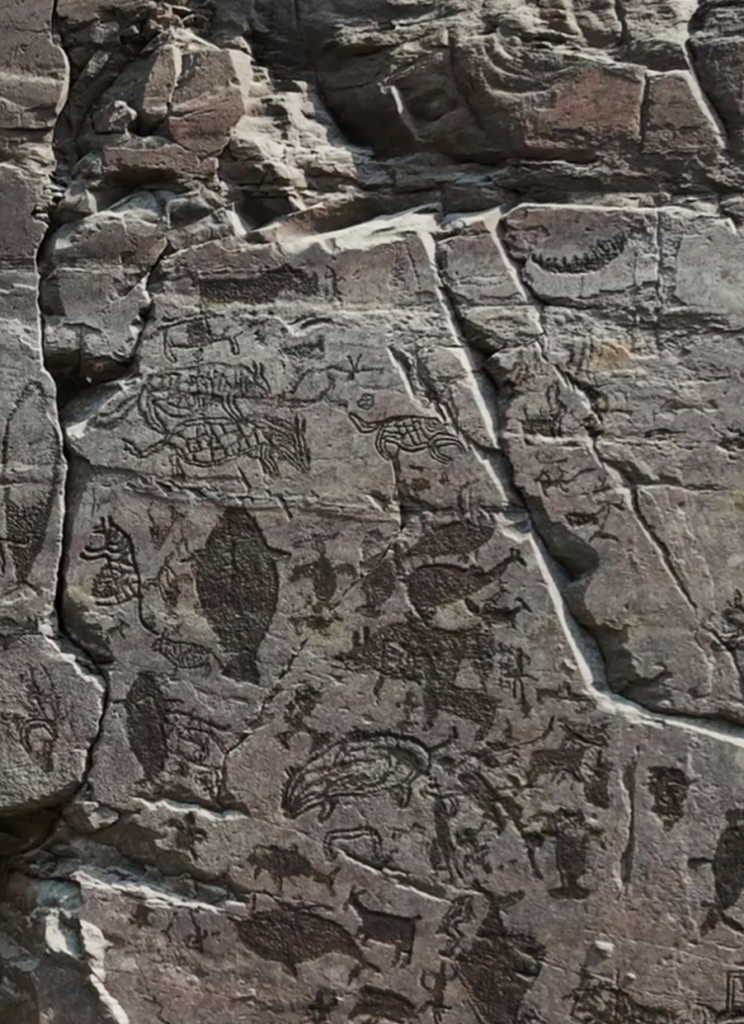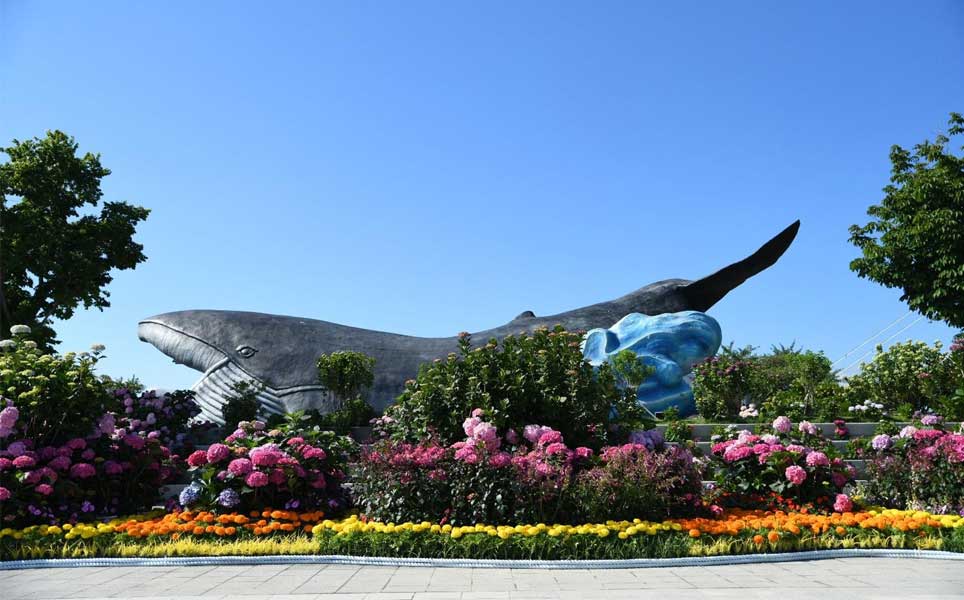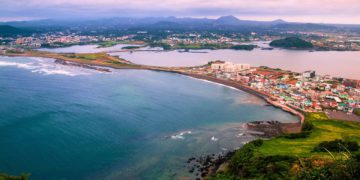Explore Ulsan Bangudae and Cheonjeon-ri petroglyphs, ancient rock carvings now recognized as Korea’s 17th UNESCO World Heritage Site.
South Korea has just added another gem to its list of cultural treasures. On July 13, at the 47th session of the UNESCO World Heritage Committee held in Paris, the prehistoric rock carvings in Ulsan were officially recognized as a World Heritage Site. This marks the 17th site in Korea to receive the prestigious designation.
For travelers interested in history, culture, and off-the-beaten-path experiences, this newly listed site offers a fascinating window into Korea’s ancient past. Set in a scenic riverside location, the rock carvings are a must-see for anyone looking to explore a different side of the country beyond its bustling cities and famous palaces.
What Are the Ulsan Rock Carvings?
The Ulsan rock carvings, officially known as the Bangudae Petroglyphs, are among the most important prehistoric artworks in Korea. Located in Daegok-ri, Ulju County, near the Taehwa River, these ancient carvings date back more than 7,000 years and offer an extraordinary glimpse into early human life on the Korean Peninsula.
The site features hundreds of detailed images etched into natural rock surfaces. These include depictions of whales and other marine and land animals, along with hunting scenes. There are more than 50 inscriptions of whales, and at least seven of them can be identified by species. The etchings are so clear that you can see humpbacks and grey whales!

“There are almost no cases where dozens of whales are depicted with such technical precision on a single rock face, and artistically, it’s of the highest level.”
– Moon Myung-dae, professor emeritus of Buddhist Arts at Dongguk University; first discoverer of the site
The carvings were added to the UNESCO World Heritage list for their outstanding cultural and historical value. According to the UNESCO, the carvings show the evolution of human interaction with nature. They also provide rare insight into prehistoric spirituality, daily life, and artistic expression.
Visitors can also explore the nearby Cheonjeon-ri Petroglyphs, another significant set of carvings that adds depth to the region’s archaeological importance. Discovered in 1970 and designated a National Treasure in 1973, the Cheonjeon-ri Petroglyphs feature more than 620 carvings, including symbols like circles and rhombuses, figures, and inscriptions, etched across a rock face measuring approximately 2.7 meters high and 10 meters wide.

“Petroglyphs along the Bangucheon Stream” includes both the Bangudae Petroglyphs and Cheonjeon-ri Petroglyphs in Daegok-ri, Eonyang in Ulsan.
Why Travelers Should Visit
The Ulsan rock carvings are more than just an archaeological site—they are a meaningful cultural experience that connects visitors to Korea’s distant past in a peaceful and natural setting.
One of the primary reasons to visit is the site’s uniqueness. While Korea is well known for its royal palaces, temples, and modern attractions, these prehistoric carvings offer something truly different. They reveal how early Koreans understood their world, celebrated nature, and passed down stories through art long before the advent of written language.
The location itself adds to the appeal. Nestled beside the Taehwa River, the site is surrounded by forested hills and quiet walking paths. It’s an ideal spot for those who enjoy slow travel, eco-tourism, or simply want to escape the city’s fast pace for a day.
Because it has only recently gained international attention, the site remains relatively uncrowded, allowing for a more intimate and thoughtful visit. Whether you’re a history enthusiast or a curious traveler, the Ulsan rock carvings offer a rare opportunity to experience Korea’s heritage in a calm and authentic setting.
Planning Your Visit to Petroglyphs along the Bangucheon Stream in Ulsan
Visiting the Ulsan rock carvings is a rewarding experience, and with a little planning, it can easily fit into your Korea itinerary.
How to Get There
The site is located in Ulju County, a rural area in Ulsan, on the southeastern coast of Korea.
- From Seoul: Take the KTX high-speed train to Ulsan Station (about 2 hours), then a local bus or taxi to the Bangudae Petroglyphs site (about 40 minutes).
- From Busan: A direct bus or train to Ulsan takes around 1 hour.
What to See and Do
- Bangudae Petroglyphs: The main attraction is located on a cliff face along the Taehwa River. The site is protected, so visitors view the carvings from a designated platform.
- Cheonjeon-ri Petroglyphs: A smaller site nearby with additional carvings and walking trails.
- Ulsan Petroglyph Museum: Learn more about the history and meaning behind the carvings. The museum is modern, interactive, and family-friendly.
- Taehwa River Eco Trail: Enjoy a peaceful walk through forests and along the riverbanks.
Best Time to Visit
Spring (April to June) and autumn (September to November) are ideal for comfortable weather and beautiful scenery. Summer can be hot and humid, but the shaded trails make it manageable.
Travel Tips
- Wear comfortable shoes, as some light walking is required.
- English signage is available at the museum, and guided tours may be offered seasonally.
- Bring water and snacks if you plan to hike or explore the area at a relaxed pace.
- Check the weather before you go, as the viewing platform is outdoors.
Other Things to Do in Ulsan
While the prehistoric rock carvings are a highlight, Ulsan has much more to offer for travelers who want to explore the region further. From coastal experiences to mountain escapes, this industrial city has a surprising range of nature and culture.
1. Jangsaengpo Whale Museum and Whale Watching
Ulsan has a deep historical connection to whales, which ties in perfectly with the imagery found in the Bangudae carvings. At the Jangsaengpo Whale Museum, you can learn about Korea’s whaling history and marine ecosystems. Depending on the season, whale watching tours are also available along the coast.

2. Taehwa River Grand Park
One of the largest urban parks in Korea, this scenic area is perfect for walking, biking, and relaxing. The park features beautifully landscaped gardens, eco-trails, and a bamboo forest. It’s especially popular during cherry blossom season.
3. Yeongnam Alps
If you’re up for some hiking, the Yeongnam Alps offer dramatic mountain views just outside the city. Trails vary in difficulty, and some peaks provide sweeping views of the Ulsan coastline.

4. Ulsan Grand Park
This is the largest urban park in Korea, offering a zoo, botanical garden, and ample green space for picnics and family outings.
5. Local Food and Markets
Ulsan is renowned for its fresh seafood, particularly dishes such as grilled mackerel, raw fish platters, and seaweed soup. Head to Ulsan Central Market or Taehwa Market to try authentic local cuisine and experience daily life in the city.
Conclusion
The recent UNESCO designation of Ulsan’s prehistoric rock carvings highlights one of Korea’s oldest and most fascinating cultural treasures. For travelers seeking to explore beyond the typical tourist routes, this site provides a meaningful connection to the country’s ancient history in a serene natural setting.
Whether you’re a history lover, a nature enthusiast, or simply curious about Korea’s lesser-known destinations, a visit to the Bangudae Petroglyphs provides a rich and memorable experience. With the bonus of nearby attractions, beautiful landscapes, and authentic local culture, Ulsan is well worth adding to your Korean travel itinerary.
Now is the perfect time to explore this newly recognized UNESCO World Heritage Site—before the rest of the world catches on.
Related Posts
1,860 total views, 6 views today

















